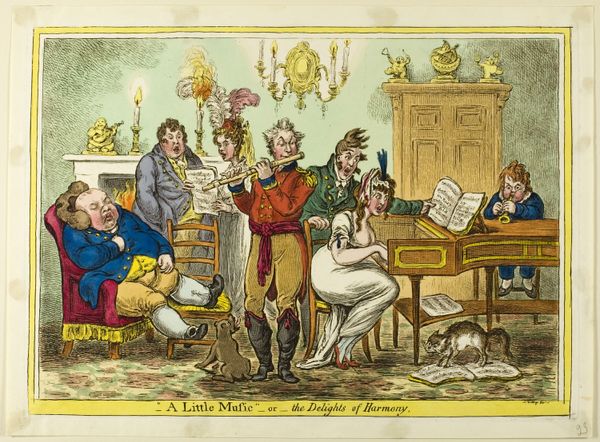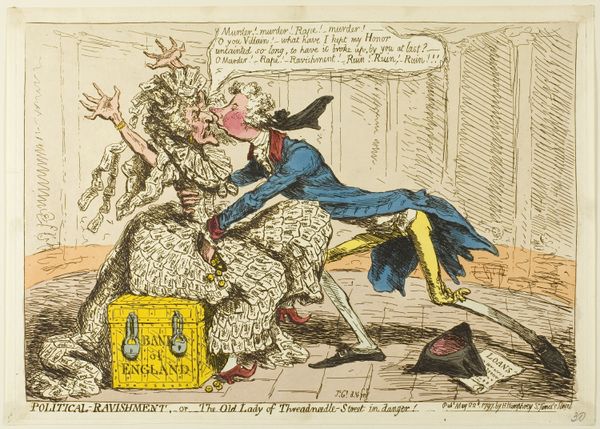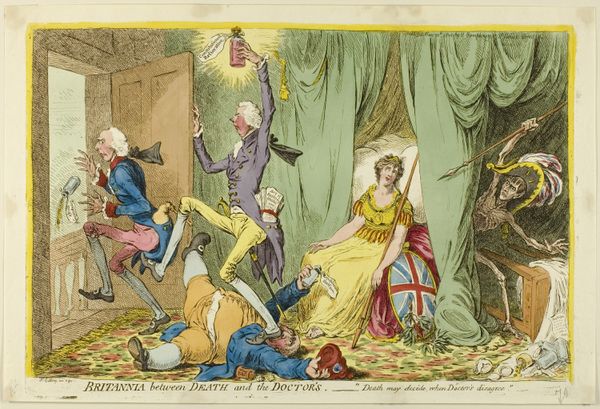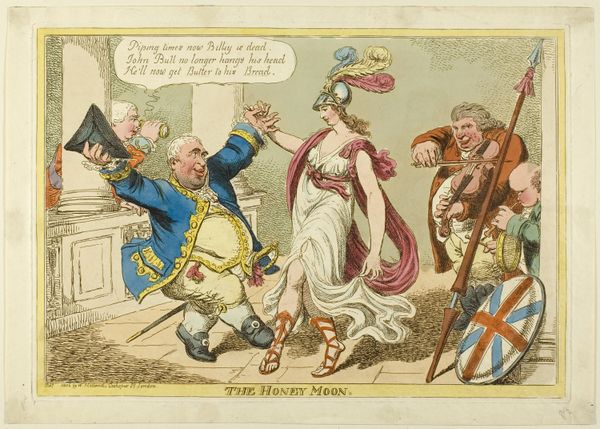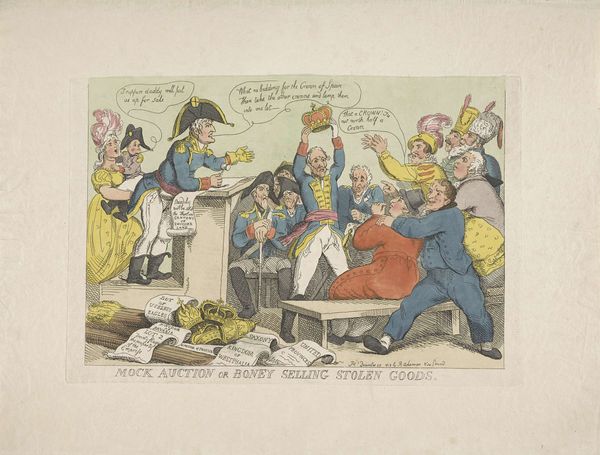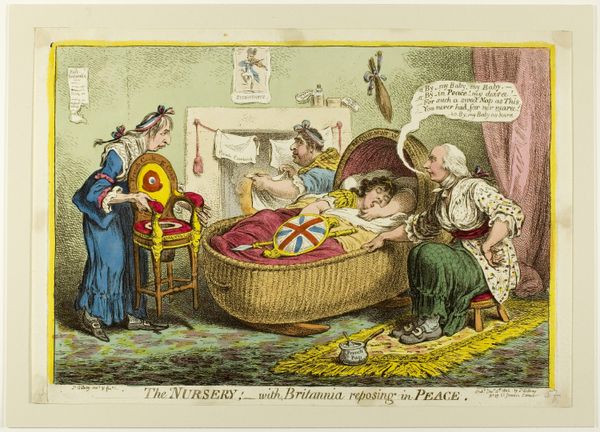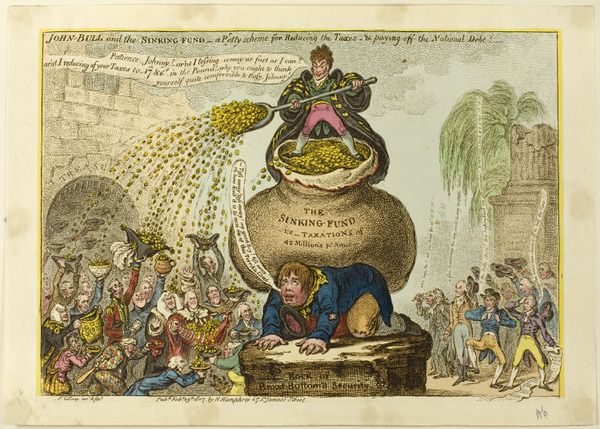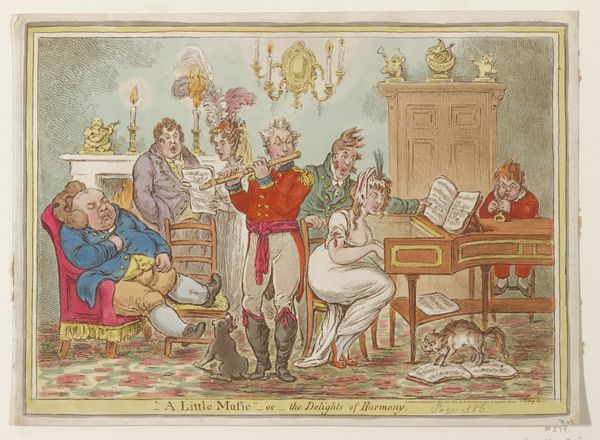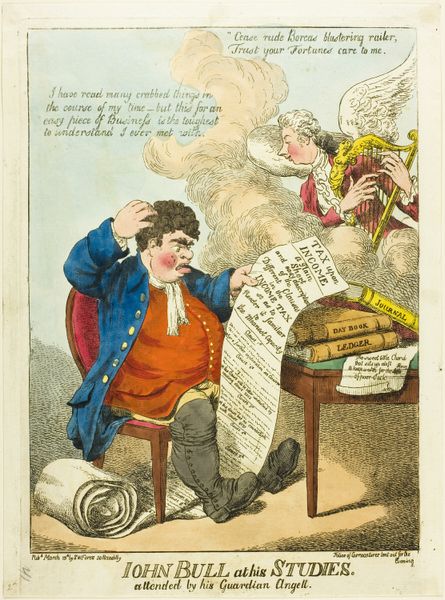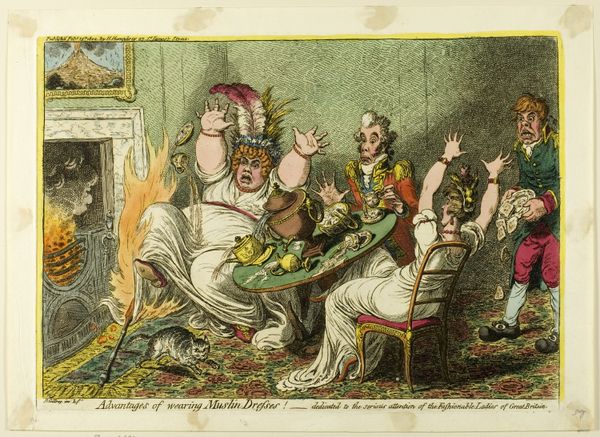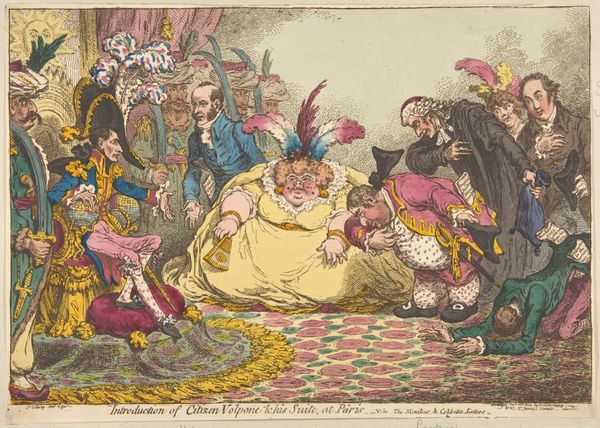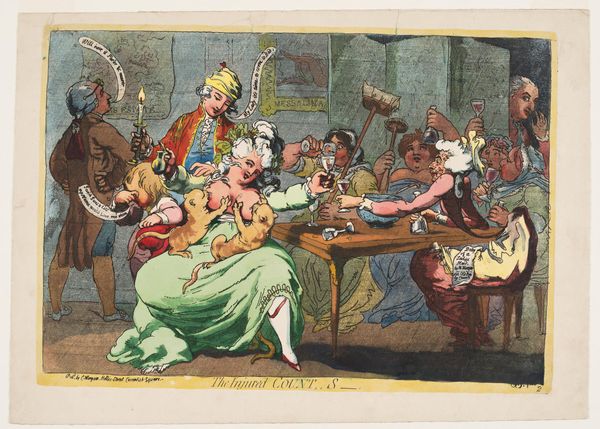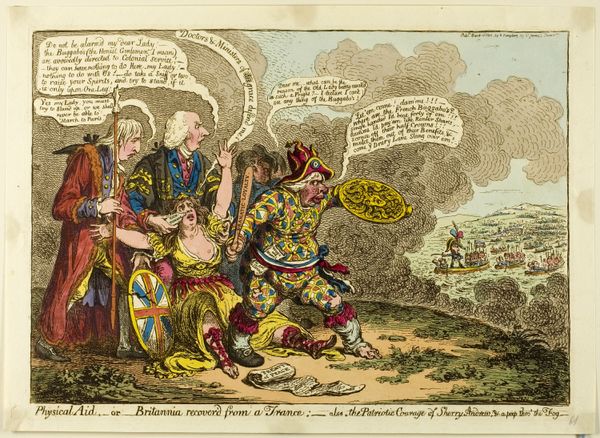
drawing, print, etching, acrylic-paint, paper
#
drawing
# print
#
etching
#
caricature
#
acrylic-paint
#
paper
#
romanticism
#
history-painting
Dimensions: 244 × 340 mm (image); 248 × 346 mm (plate); 285 × 397 mm (sheet)
Copyright: Public Domain
Editor: Here we have James Gillray's "John Bull Ground Down," a print and etching, possibly from 1795. The imagery is pretty striking, all these coins and figures…it makes me think of labor, and how wealth is produced and distributed. What can you tell me about this piece from a materialist point of view? Curator: Absolutely. Consider the title: "John Bull Ground Down". What is being "ground down"? The raw materials here are labor, bodies, resources... the very stuff of society turned into gold by, we see, the mill. And who operates the mill? Editor: Well, someone who appears to be an aristocrat seems to be cranking the lever. While others around scramble for the gold. But who’s being “ground down”? Curator: Precisely. Look at the image. Who are the bodies being literally walked on and subjected to this labor? Whose work actually produces the wealth we see spilling out? Consider the materiality of those bodies in relation to that of the gold coins – what are they made of? How are they valued within this system of production? Editor: It’s the everyman, "John Bull," who becomes the raw material, practically a resource, fueling the upper class's wealth. That makes you wonder about Gillray's own positionality within this... Curator: Exactly! Think about who consumed prints like these. What role did they play in either perpetuating or challenging these systems of power and exploitation? Were they also complicit? This work prompts us to analyze not just what is depicted but *how* and *for whom* it was produced, its conditions of circulation, and the political economy of printmaking at that time. Editor: So, viewing this print through a materialist lens makes us question the very mechanics of wealth and power in that era, revealing the social relations embedded within even the means of artistic production and consumption. Curator: Precisely. It's about unearthing the processes by which materials, including human bodies, are transformed and given value in a particular historical context. We are no longer looking at "art," but material reality!
Comments
No comments
Be the first to comment and join the conversation on the ultimate creative platform.
